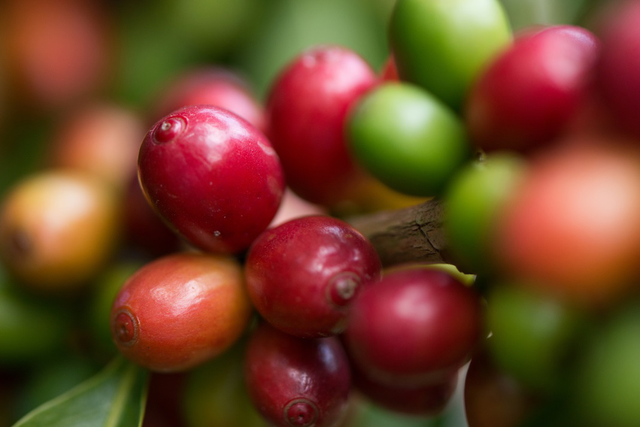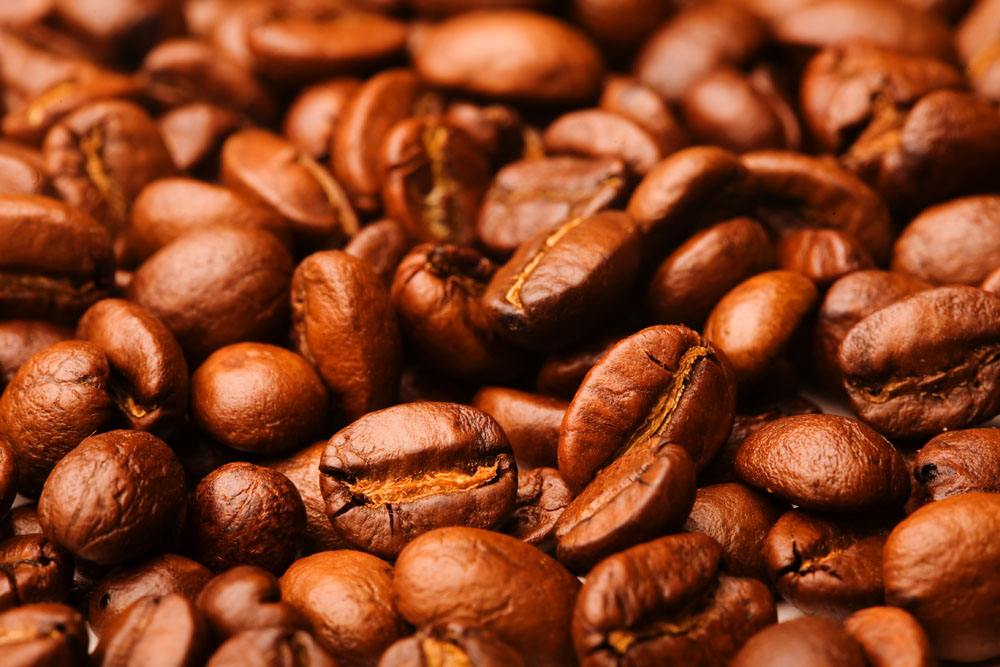Ecuador Coffee single Bean Flavor description characteristics planting History planting Information

For professional baristas, please follow the coffee workshop (Wechat official account cafe_style)
The addition of Gaoshandou to the rose is so amazing.
Mr. Veniso, the champion of the 2014 Ecuador Coffee Competition, told reporters that some of the Ecuadorian coffee is espresso made from Ecuadorian alpine coffee beans. This kind of coffee comes from a mountain area with an altitude of about 1000 Mueller 2000 meters above sea level and has a mellow taste. With aromas and sweetness of fruit, grass and chocolate; some add menthol from the Amazon to this espresso; others add Ecuadorian rose petals called "Rolls-Royce in the Rose" to the espresso. The taste is amazing.
Ms. Malena, Consulate General of Ecuador in Guangzhou, said that coffee buyers from Guangdong have gone to Ecuador to buy coffee beans, and coffee lovers in Guangzhou will soon be able to taste the fragrant Ecuadorian coffee in the cafes on the streets.
Galapagos (GALAPAGOS) are islands directly below the equator in the Pacific Ocean.
Is a famous tourist attraction, the island has many important unique ecology and species
Such as giant tortoises, GALAPAGOS penguins... Wait,
Therefore, it is listed as a natural park by the United Nations Educational, Scientific and Cultural Organization (USECO).
No chemical fertilizer shall be used in accordance with the law.
Of course, the coffee produced by Galapagos is also "all natural" organic coffee.
The coffee producing area of Galapagos is on SAN CRISTOBAL Island.
The planting altitude is only about 800m.
The area is foggy, lush with plants and plenty of water.
It also belongs to the pozzolanic soil, which is quite suitable for the growth of coffee (except that it is not tall enough).
Ecuador, which passes through the equator between Colombia and Peru, is one of the few countries in South America that produces both Arabica and robusta coffee. In fact, Ecuador means "equator" in Spanish. Due to the use of old-fashioned traditional harvesting and handling methods, Ecuadorian coffee is not included in the list of boutique coffee, so it is generally rare and unfamiliar. Ecuador faces the Pacific Ocean, and near the equator, about 900km west of longitude 90 degrees, Ecuador is also dependent on the Galapagos Island Islands, also known as Cologne, which produces the well-known Galapagos coffee. In order to protect the natural ecology, the Ecuadorian government has designated the archipelago as a national park and banned the use of chemical fertilizers, pesticides and other chemicals, so coffee in the Galapagos Islands is recognized as organic coffee. Galapagos Islands coffee flavor is more balanced and neutral, moderately mellow, with a little obvious but pleasant acidity, with a special aroma. However, because it is rarely seen on the market, not many people talk about this coffee.
Ecuador Ecuador
Population: 15224000
Ecuadorian coffee is increasingly prominent in the boutique coffee industry, and although low-lying areas are unlikely to produce good coffee, higher elevations have great potential.
GALAPAGOS
The Galapagos Islands GALAPAGOS produces a small amount of coffee in the Galapagos Islands, and its supporters claim that the climate there simulates higher elevations and can grow higher-quality coffee. Coffee like this can be very expensive and does not reflect the quality in price.
Altitude: 350m
Harvest: June-September and December February varieties: bourbon
Ecuadorian coffee
Probably the highest Arabica coffee grower in the world.
The Arabian Coffee Tree was first introduced to Ecuador (Ecuador) in 1952 and its coffee is of good quality, especially the coffee harvested in early June. Ecuadorian coffee beans can be divided into two varieties: Galapagos and Gigante, both of which have the characteristics of large granules and heavy weight. Ecuadorian coffee can be divided into first class according to quality (No. 1) and Extra Superior. They are mainly exported to the Nordic countries of Scandinavia.
The main problem facing coffee producers is their efforts to maintain stable quality. The coffee here is generally well-balanced and refreshing, with a unique aroma.
Ecuador is one of the few countries in South America that produces both Arabica coffee and Robbins coffee. However, as the land suitable for Arabica coffee trees is decreasing, the production of Robbins coffee is gradually increasing. The best Arabica coffee comes from the Andes, especially the Chanchagu Valley (Chanchamgo Valley). The Andes are divided into two mountains, extending from south to north to central Ecuador.
Ecuador Zumba ACRIM
Aklin Peasants' Association of Lomba, Ecuador
National Ecuador (Ecuador)
Rumba (Zumba), Zamora-Chinchipe
1300-1900 meters above sea level
Planting varieties Typica, Caturra and Bourbon
Small farmers, members of producers' cooperatives
The annual rainfall is about 1000-1500 mm
The temperature is 12-28 degrees Celsius.
The area is about 1.5 hectares per member of small farmers.
Treatment washing
Flavor: front citrus sour, berry aroma, middle peach aroma, tail green tea, cigarette with floral aroma, solid and rich taste
This batch is from a cooperative organization of high-quality coffee raw bean producers in southern Ecuador, which is part of a larger alliance of coffee producers in a region bordering Peru. The association has excellent coordination and leadership, which helps them position themselves as the top producers of Ecuadorian coffee, and the raw coffee beans from this cooperative have won many places in the Taza Dorada competition.
The Taza Dorada contest has been held for many years. Coffee farmers submit their high-quality coffee raw beans for national and international evaluation to determine which are the best micro-batches, which can be said to be Ecuador's COE. Unlike the COE system, Taza Dorada does not adopt an auction system, and the winning batches of raw coffee beans will almost be booked by buyers who know the goods.
Small farmers in this region still maintain the fine tradition of growing traditional varieties such as Typica, Caturra and Bourbon, which has been the key to their success.
The climate is very special in this area, humid almost all the year round, and the temperature fluctuates very comfortably, from 12 to 28 degrees Celsius, with an average of about 20 degrees Celsius, which is very suitable for coffee growth and reflects the flavor in the cup.
Most of the typical coffee and raw bean estates in southern Ecuador are organically grown, and the crops are very diverse. Corn, cabbage, bananas, bees, cattle, fish, fruit and coffee are grown together. Coffee leaf embroidery disease has been a threat to coffee bean producers in the region, and leaf rust has reduced Colombia's coffee production by 50% for a year or two. The simplest solution against leaf rust is intensive chemical applications, but coffee farmers in the region take a more determined organic approach because of their respect for the environment.
Probably the highest Arabica coffee grower in the world.
The Arabian Coffee Tree was first introduced to Ecuador (Ecuador) in 1952 and its coffee is of good quality, especially the coffee harvested in early June. Ecuadorian coffee beans can be divided into two varieties: Galapagos and Gigante, both of which have the characteristics of large granules and heavy weight. Ecuadorian coffee can be divided into first class according to quality (No. 1) and Special Excellence (Extra
Superior) two kinds. They are mainly exported to the Nordic countries of Scandinavia.
The main problem facing coffee producers is their efforts to maintain stable quality. The coffee here is generally well-balanced and refreshing, with a unique aroma.
Ecuador is one of the few countries in South America that produces both Arabica coffee and Robbins coffee. However, as the land suitable for Arabica coffee trees is decreasing, the production of Robbins coffee is gradually increasing. The best Arabica coffee comes from the Andes, especially in the Chanchagu Valley (Chanchamgo
Valley), the Andes is divided into two series of mountains, extending from south to north to central Ecuador
Most countries in the world are rich in only one kind of coffee beans, while Ecuador is one of the few countries in the world that can produce both Arabica coffee beans and Robusta coffee beans. The Ecuadorian Coffee tasting, sponsored by the Consulate of Ecuador in Guangzhou, was recently held at the Art Cafe in the Guangdong Provincial Museum.
Organic beans, flowers and fruits, caramel smell to the nostrils
According to Ms. Malena, Consul General of the Consulate General of Ecuador in Guangzhou, Ecuador is located in South America, and the equatorial line runs through the country, so it is also known as the "equatorial country". Its superior geographical location, fertile soil and special climatic conditions create a superior natural environment for coffee bean cultivation.
The coffee beans produced in Ecuador's Galapagos Islands are organic coffee beans, thanks to the unique ecological environment such as volcanic soil and microclimate, coupled with the fact that they do not use any chemical fertilizers or pesticides, they are recognized as natural green boutique coffee. this naturally grown coffee has a mild taste with a hint of flowers and fruit and caramel. It is understood that the Galapagos Islands are about 1000 kilometers away from the mainland of Ecuador and are located at the confluence of the eastern Pacific Ocean and the three major ocean currents. In 1978, the Galapagos Islands was declared a "World Natural Heritage site" by UNESCO. The archipelago is known as the "living Museum of Biological Evolution" and "the melting pot of marine life", and Darwin's theory of evolution was inspired by the Galapagos Islands.
Important Notice :
前街咖啡 FrontStreet Coffee has moved to new addredd:
FrontStreet Coffee Address: 315,Donghua East Road,GuangZhou
Tel:020 38364473
- Prev

Introduction of Latin American coffee and its aroma, brightness, mellow flavor and aftertaste
Following Cafe (official Wechat account vdailycom) found that the Beautiful Cafe opened a small shop of its own. In 1721, French naval officer Gabriel Mathieu de Clieu brought the first coffee sapling from Africa to the Latin American island of Martinique, all of which was the origin of coffee cultivation in Latin America. Because France at that time was in
- Next

Introduction characteristics of Ecuadorian coffee beans planting information description of flavor in planting areas
Professional baristas Please follow the Coffee Workshop (Wechat official account cafe_style) most countries in the world only produce one kind of coffee beans, but Ecuador is one of the few countries in the world that can produce both Arabica and Robusta coffee beans. The Ecuadorian Coffee tasting, sponsored by the Consulate of Ecuador in Guangzhou, recently held an exhibition in Guangdong Province.
Related
- Detailed explanation of Jadeite planting Land in Panamanian Jadeite Manor introduction to the grading system of Jadeite competitive bidding, Red bid, Green bid and Rose Summer
- Story of Coffee planting in Brenka region of Costa Rica Stonehenge Manor anaerobic heavy honey treatment of flavor mouth
- What's on the barrel of Blue Mountain Coffee beans?
- Can American coffee also pull flowers? How to use hot American style to pull out a good-looking pattern?
- Can you make a cold extract with coffee beans? What is the right proportion for cold-extracted coffee formula?
- Indonesian PWN Gold Mandrine Coffee Origin Features Flavor How to Chong? Mandolin coffee is American.
- A brief introduction to the flavor characteristics of Brazilian yellow bourbon coffee beans
- What is the effect of different water quality on the flavor of cold-extracted coffee? What kind of water is best for brewing coffee?
- Why do you think of Rose Summer whenever you mention Panamanian coffee?
- Introduction to the characteristics of authentic blue mountain coffee bean producing areas? What is the CIB Coffee Authority in Jamaica?

